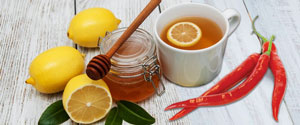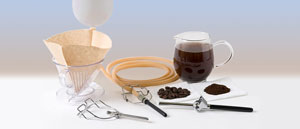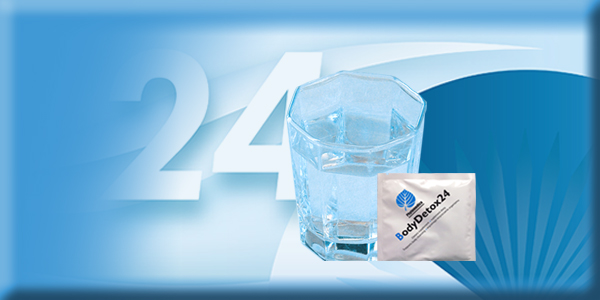Medical Detox
Medical detox is most often a procedure aimed at safely extracting a person from addiction to psychoactive substances, i.e. certain drugs, drugs and alcohol. Substance withdrawal can be associated with a range of unpleasant and sometimes dangerous withdrawal symptoms. Medical detox is usually conducted by a physician or addiction therapist. Our BodyDetxo24 product is not intended for addiction treatment.
One can read more → Physical Detoxification Services for Withdrawal From Specific Substances in Detoxification and Substance Abuse Treatment, internet publication in ![]() .
.
Cleansing Detox
Those who practice detoxifying believe that when you detoxify the body, you are removing a buildup of toxins and improving the function of the organs, including the kidneys and liver, improving the skin and circulation of the blood, and allowing the organs to "rest." Generally in a detox diet, there are certain foods you are allowed to eat and certain foods you are to avoid. In nearly every detox diet, you will be instructed to avoid caffeine, alcohol, meat, saturated fats and refined sugars.
Some detox diets are more extreme than others, allowing only a very limited amount of foods. One popular detoxification diet is the honey and cayenne pepper diet, which involves creating a mixture of lemon juice, honey, cayenne pepper and water and drinking it numerous times throughout the day for ten days. Other detox diets simply focus on eating lots of fruits, vegetables and grains, and drinking lots of purified water.
Another popular detoxification method is a colon cleanse, also known as a colonic. Colonics involve the flushing of the intestines with filtered water after a plastic tube is inserted into the rectum. If you choose to get a colon cleanse, spend some time researching options in your area to find a reputable colonic therapist.

Lemon, honey and cayenne pepper
Some detox diets are more restrictive than others, allowing you to consume very limited amounts of food. Popular detox diets include the lemon, honey, and cayenne pepper diet.
Lemon, honey and cayenne pepper diet belong to the popular detox diet. In this diet, a mixture of water, lemon juice, honey and cayenne pepper is made and drunk multiple times daily for 10 days. Another detox diet focuses on eating lots of fruits and vegetables, whole grain cereal products and drinking plenty of purified water*.
Colon Cleansing
Another popular cleansing detox is colon cleansing. This is the so-called hydrocolon. Also called a deep enema, it is a method of cleansing the large intestine of deposits and toxins, which, if ignored, promote self-intoxication. During active lavage, the colon is washed with filtered water along its entire length up to the appendix. Water flows into the body through a thinner pipe, and through a thicker pipe, the remains of old excrement, mucus, parasites, old bile, etc. are discharged straight into the sewage system. When using the procedure, we do not have to go to the toilet or assume an uncomfortable position. Thanks to this, the treatment is clean, hygienic and non-binding. The therapy increases intestinal peristalsis, helps to get rid of constipation. Applied once in a while, it allows you to get rid of undigested products stuck to the walls of the intestine, and after years they rot, ferment, poisoning our body. The procedure should be carried out by a person trained and experienced in this type of procedure. Elderly people or people with concomitant bowel disease or other serious illnesses should consult a doctor before the procedure. Contraindications to this type of procedures include: severe heart disease, aneurysms, acute hemorrhagic enteritis, pregnancy, acute catarrh of the intestine with electrolytic disorders, condition after recent operations of the large intestine.
Searching online will give you numerous options for detox diets, depending on the amount of time you have to devote to the detox and what types of foods or special drinks you are willing to eat. Some detoxifications last for three days, but they can last for seven days, ten days, or even longer. Planning ahead is beneficial, as some symptoms of detox diets can be quite unpleasant and something you may not want to deal with at work.
Some of the problems that detoxification may help improve include fatigue, headaches, nausea, skin problems, sinus problems and digestion. Some proponents of detox diets say that detoxification can also promote feelings of well-being. The detox diet itself, however, can also induce fatigue, headaches, and intestinal problems. Be sure to stay hydrated, as dehydration can be dangerous and potentially life-threatening. If you choose to do a detox diet, use common sense, speak with your healthcare provider about your plans, and stop the diet if you feel ill.
Coffee Enema

A coffee enema involves injecting coffee into the rectum and colon through the anus, i.e. as a coffee enema. This procedure was developed in the late 19th century and was used to remove toxins from the liver and blood and relieve the patient of discomfort and pain in various diseases. The procedure was developed further in the first half of twentieth century by the German physician Max Gerson.
At that time, this procedure was used to treat cancer. In the 1970s, coffee enema gained many enthusiasts and became popular again as a method of detoxification and cleansing the body. This method is promoted by American Gerson Institute. You can learn more about the coffee enema method, recommended materials, techniques and benefits from the videos available from the following links:
There are very controversial opinions about this procedure. "University Medicine" maintains that there is no medical or scientific evidence to support any positive health claims about the practice, and medical authorities recommend that the procedure may be unsafe.
Detox and Sugar
When carrying out a cleansing detox, it is worth getting rid of refined sugar from your diet. People who need to sweeten can replace sugar with various types of sweeteners. The natural sweetener - stevioside - derived from South American plant – Stevia rebaudiana* seems to be the best. Until recently, stevia was not approved for food in the European Union, possibly due to the aspartame lobby. Currently, various stevia-based products are widely available throughout the EU. Their main disadvantage is a rather high price. One sweetener tablet is usually equivalent to 1 teaspoon of sugar. A thousand tablets of a stevia-based sweetener costs about PLN 37, i.e. less than 4 grosz per tablet, while 1,200 tablets of an aspratam-based sweetener cost only PLN 6-7, i.e. half a penny per tablet. One teaspoon of sugar costs about PLN 0.3 with a price of about PLN 6. per kilogram of sugar.

Stevia rebaudiana was part of the original formula of BodyDetox24. Stevia rebaudiana is a plant that does not occur in Europe and during the BodyDetox24 registration in Poland we were requested to register this ingredient as a novel food in the European Union. However, we did not have the documentation required for such a registration process available at that time. In order not to delay registration, stevia has been replaced with xylitol – natural sweetener derived from birch. Sweetening effect of xylitol is much weaker than in Stevia, xylitol shows also a laxative effect, which is important in the case of cleansing the body. Stevia rebaudiana was approved as a food additive in the European Union in 2012.
Approximate sweetening power of some selected artificial sweeteners and natural sweeteners compared to food sugar (sucrose). Food sugar i.e. sucrose is a disaccharide composed of one glucose and one fructose molecules.
| Artificial Sweeteners | Natural Sweeteners | |||
|---|---|---|---|---|
| Acesulfam K | 0,3 | Stevia | 0,3 | |
| Aspartam | 0,5 | Xylitol | 25 | |
| Saccharine | 5 | Food sugar** | 100 | |
| Cyclamic acid | 25 | Grape sugar | 120 | |
The above results are given as the number of grams of a given substance corresponding to 100 grams of sugar for the same sweetness effect. These figures are indicative and may vary quite significantly depending on the assessment method used.
In addition to powerfull sweetening properties (100x stronger than sugar), Stevia rebaudiana has a number of properties that deserve attention. The most important of them are listed below:
- Sweetening compounds obtained from Stevia rebaudiana i.e. steviosides, steviol biocides, rebaudioside A and nucleosides are not only very low in calories, but they also have a blood sugar-lowering (i.e. hypoglycaemic) effect.
- Moreover, chlorogenic acid from Stevia extract reduces the enzymatic conversion of glycogen into glucose, and additionally reduces the absorption of glucose in the digestive tract.
- Unlike sugar, Stevia rebaudiana extract has the following properties: (1) durability and long shelf life, (2) temperature resistance, (3) does not ferment and (4) it has almost zero calories.
- In addition, stevia plant has many sterols and antioxidant compounds like triterpenes, flavonoids, and tannins. Some of flavonoid polyphenolic anti-oxidant phyto-chemicals present in stevia is kaempferol, quercetin, chlorogenic acid, caffeic acid, isoquercitrin, isosteviol, etc. Studies found that kaempferol can reduce risk of pancreatic cancer by 23% (Am.J.Epidemiology).
- Certain glycosides in stevia extract have been found to dilate blood vessels, increase sodium excretion, and urine output. In effect, stevia, at slightly higher doses than as sweetener, can help lower blood pressure.
- Being a non-carbohydrate sweetener, stevia would not favor the growth of Streptococcus mutans bacteria in the mouth which is attributed to be a causative agent for dental caries and tooth cavities. On the other hand, certain compounds in stevia are rather found to inhibit caries causing bacteria in the mouth.
- In addition, being a herb, stevia contain many vitals minerals, vitamins that are selectively absent in the artificial sweeteners.
** Food sugar i.e. sucrose is a disaccharide composed of one glucose and one fructose molecules.






